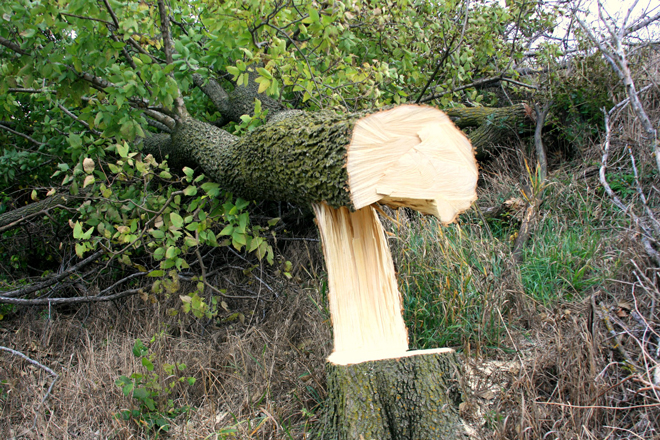Research efforts on bobwhites over the last decade are helping landowners, farmers, ranchers and private lands biologists make informed decisions for managing quail populations throughout their native range. Projects and monitoring efforts carried out in traditional quail hotbeds like Missouri, Kansas and Oklahoma have proved two important points:
- Reducing the amount of grasses (particularly sod-forming grasses) while increasing forb density/diversity is critical for building resilient quail populations.
- Shrubby cover (also known as covey headquarters or escape cover) with a minimum size of 1500’ square feet per every five acres is a preferred habitat for bobwhites.
Converting fields of fescue, smooth brome, or other sod-forming grasses to more native plants and forbs is an undertaking best managed with the help of a Quail Forever biologist or a private lands professional as part of your state wildlife agency. On the other hand, creating a shrubby cover component is not only a great social distancing tool for the current times, but a wonderful way to enhance micro quail habitat with a chainsaw, sprayer/herbicide combo, and a small amount of pre-planning. So, let’s get down to the basics:
What is the definition of “edge?”
An edge is the place where two different habitat types meet. For instance, an edge might consist of forestland next to cropland or wetland next to a field. Gradual edges generally harbor a great variety of plants and animals from each habitat, while abrupt edges tend to lack this “middle ground” of varying plant types. The quality and amount of edge habitat can directly affect the quantity of bobwhite quail on your property.
What is edge feathering?
In its most basic form, edge feathering is creating a gradual transition between two habitat (edge) types. It is accomplished by felling existing vegetation, or by planting shrubs of varying heights. Edge feathering, also known as "hinge cutting," turns trees into shrubby habitat for quail and other upland wildlife. The purpose of edge feathering is to create habitat that provides both shrubby and weedy areas throughout these transition zones. Quail require dense woody cover to escape predators and survive harsh winters. However, most field edges are abrupt changes from cropland to mature trees today, so we’re using edge feathering as a means of creating early successional habitat. Think of it this way – edge feathering is re-creating each quail-friendly fence line that could be found during the 1980’s.

Specifications for Your Edge Feathering Project
- A chainsaw, sprayer/herbicide combo and a little elbow grease can go a long way.
- Try hinge-cutting the trees in your work area: felling a tree (cutting ¾ of the way through, 2-3 feet off the ground) so it falls horizontally but remains attached and living to provide food, cover and shelter.
- Winter and early spring (right now) are popular times for edge feathering when leaves are absent, bugs are scarce, and the final project is easier to envision.
- To maximize this wildlife-friendly practice, the minimum size of an area to edge feather is 30’x50’ (1500 square feet) for every five acres.
- If sod-forming grasses or undesirable species are present (such as smooth brome), treat with an approved herbicide prior to edge feathering. Herbicide applications should be used in the late fall after the leaves have fallen from any existing desirable shrubs, and while the grasses are still green and actively growing. DO allow weeds and other preferable quail plants to flourish.
- Edge feathering should be completed on trees with a diameter >6 inches and in blocks or linear strips along a field edge. DO NOT push the downed trees into a dense brush pile or stack trees, this will defeat the purpose of your quail habitat project.
- Treat the cut stumps of undesirable trees, shrubs, and vines with an approved herbicide to prevent re-sprouting. These would include species as honey locust, Russian olive, eastern red cedar, elm and others. Leave native shrubs, like American plum and chokecherry.
- Periodic follow-up treatments every 3-5 years may be required to maintain the herbaceous annuals and perennials within and adjacent to your feathered edge.
Edge feathering is an easy technique to exponentially increase the amount of usable quail habitat on any property. In addition to providing a covey headquarters, the natural defense mechanism of quail to fly up and out of cover lends itself to a well-planned feathering project. If you build it, they will come.
So, what’s left to do? Get your chainsaw sharpened, find your sprayer, design your attack plan, and start making quality bobwhite habitat with edge feathering – you’ll be glad you did! Want to hear it straight from the experts? Take an hour and listen to Episode 62 of On the Wing Podcast: A Bobwhite Quail Success Story in Missouri.